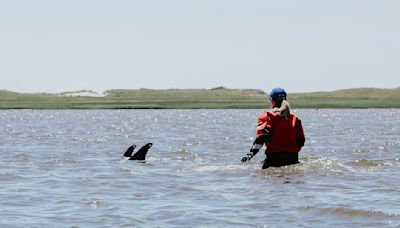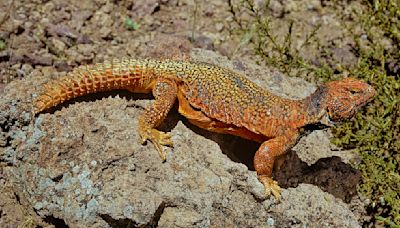Search results
Over 1.5 million living animal species have been described, of which around 1.05 million are insects, over 85,000 are molluscs, and around 65,000 are vertebrates. It has been estimated there are as many as 7.77 million animal species on Earth. Animal body lengths range from 8.5 μm (0.00033 in) to 33.6 m (110 ft).
- Overview
- The animal kingdom
Animals are multicellular eukaryotes whose cells are bound together by collagen. Animals dominate human conceptions of life on Earth because of their size, diversity, abundance, and mobility. The presence of muscles and mobility is one of the primary characteristics of the animal kingdom.
What are the two major groups of animals?
The two major groups of animals are vertebrates and invertebrates. Vertebrates have backbones, and invertebrates do not.
When did animals first appear?
Animals first appeared in the Ediacaran Period, about 635 million to 541 million years ago, as soft-bodied forms that left traces of their bodies in shallow-water sediments.
What are the basic functional systems of animals?
Animals evolved from unicellular eukaryotes. The presence of a nuclear membrane in eukaryotes permits separation of the two phases of protein synthesis: transcription (copying) of deoxyribonucleic acid (DNA) in the nucleus and translation (decoding) of the message into protein in the cytoplasm. Compared to the structure of the bacterial cell, this ...
Explore the fascinating world of animals with National Geographic, from cockroaches to orcas, from fireflies to sperm whales. Learn about their behavior, ecology, conservation, and more with photos, videos, and articles.
Explore amazing facts, photos, and videos of your favorite animals with National Geographic Kids. Join the fun and learn more about the natural world.
animal is a peer-reviewed journal that publishes innovative and cutting-edge research on farmed or managed animals and their systems. It covers topics such as breeding, nutrition, physiology, welfare, health, quality, and sustainability of animal production and products.
Explore the diversity and wonder of the animal kingdom with Animalia, a comprehensive online encyclopedia. Learn about mammals, birds, reptiles, amphibians, mollusks, fish, insects and more, with facts, photos and videos.
Explore the diversity and wonder of animals with pictures, videos, facts, news, and more from National Geographic. Discover the latest stories, videos, and photos of amphibians, birds, fish, invertebrates, mammals, reptiles, and more.






